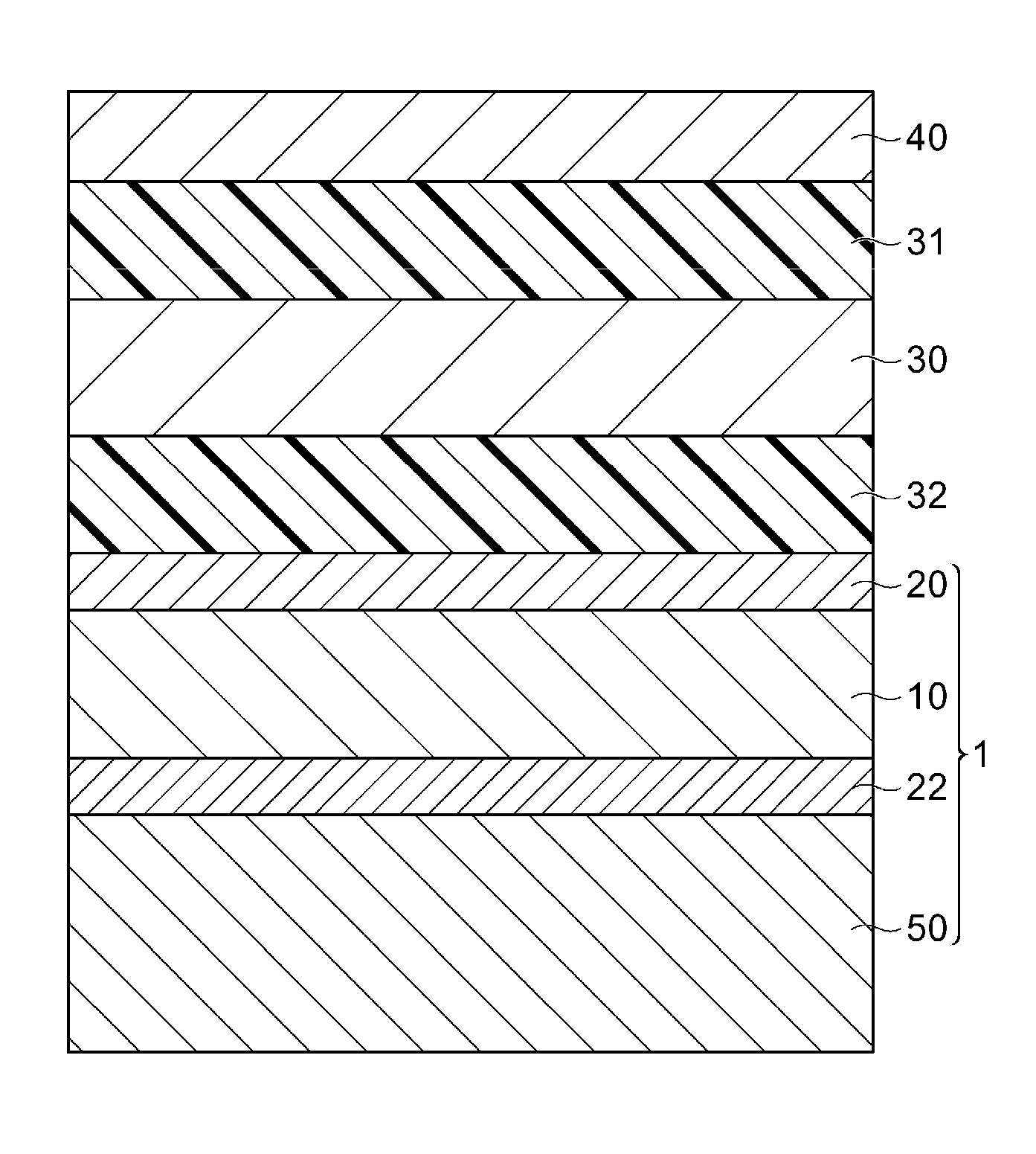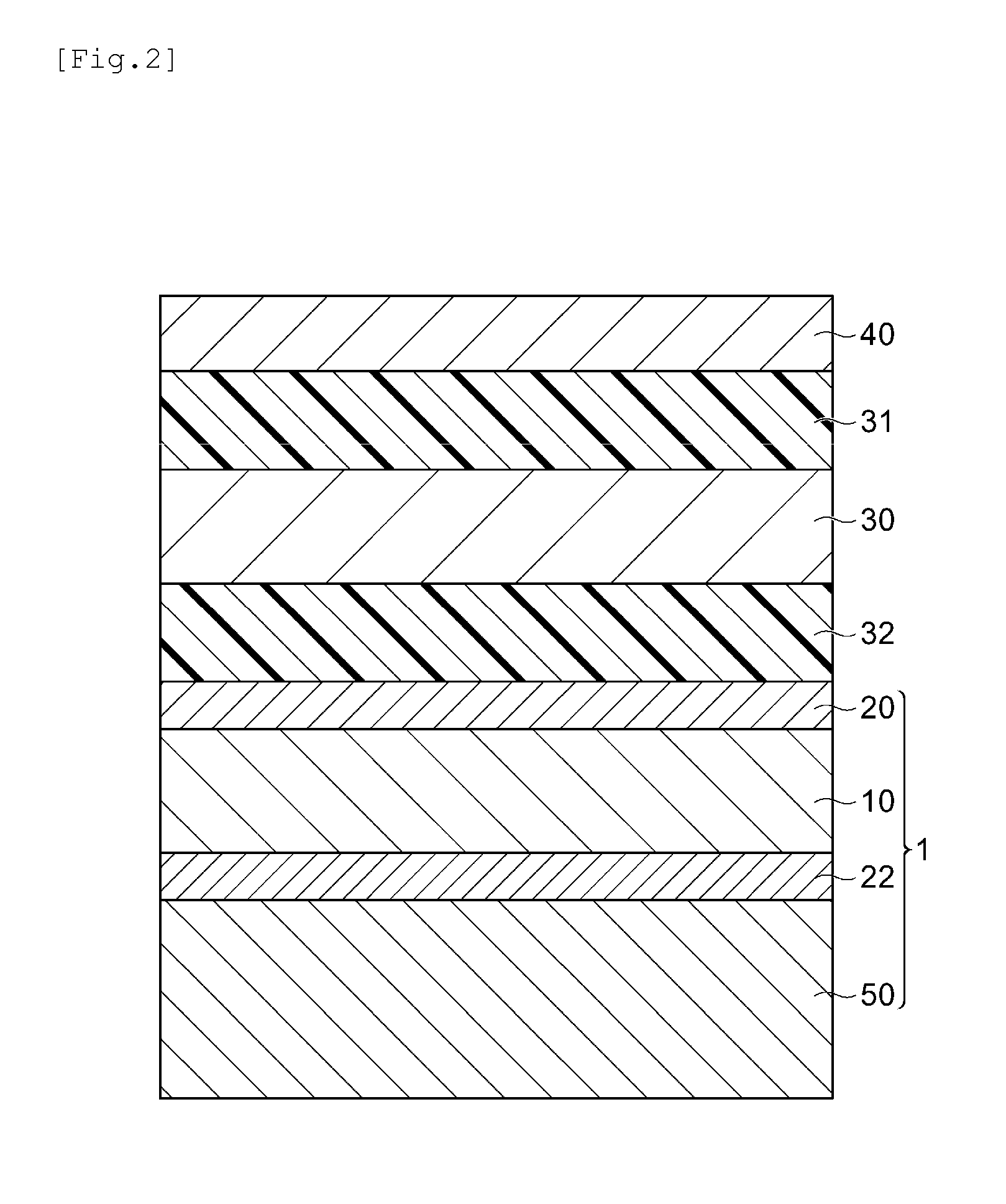Liquid curable resin composition, method for manufacturing image display device using same, and image display device
a technology of liquid curable resin and composition, which is applied in the direction of synthetic resin layered products, instruments, transportation and packaging, etc., can solve the problems of lowering image quality and possible occurrence of lowering, and achieve the effects of reducing stress, excellent transparency, and controlling the curing shrinkage ratio
- Summary
- Abstract
- Description
- Claims
- Application Information
AI Technical Summary
Benefits of technology
Problems solved by technology
Method used
Image
Examples
manufacturing example 1
Synthesis of Polyurethane Acrylate 1
[0155]In a reactor equipped with a condenser, a thermometer, a stirrer, a dropping funnel, and an air injection pipe, 520.8 g (0.613 moles) of polytetramethylene glycol (molecular weight: 850) and 1.06 g (0.01 moles) of diethylene glycol as the above-described component (a1), 275.2 g (0.8 moles) of an adduct of 2-hydroxyethyl acrylate with 2 moles of caprolactone (trade name: PLACCEL FA2D, manufactured by Daicel Corporation) as the above-described component (a3), 0.5 g of p-methoxyphenol as a polymerization inhibitor, and 0.3 g of dibutyltin dilaurate as a catalyst were added. After increasing the temperature to 70° C. while allowing air to flow into the reactor, 222 g (1 mole) of isophorone diisocyanate as the above-described component (a2) was uniformly dropped over 2 hours while stirring at 70 to 75° C., thereby carrying out a reaction.
[0156]After completion of dropping, the reaction was continued for 5 hours, and when it was confirmed that the...
manufacturing example 2
Synthesis of Polyurethane Acrylate 2
[0157]In a reactor equipped with a condenser, a thermometer, a stirrer, a dropping funnel, and an air injection pipe, 520.8 g (0.613 moles) of polytetramethylene glycol (molecular weight: 850) and 1.06 g (0.01 moles) of diethylene glycol as the above-described component (a1), 137.6 g (0.4 moles) of an adduct of 2-hydroxyethyl acrylate with 2 moles of caprolactone (trade name: PLACCEL FA2D, manufactured by Daicel Corporation) as the above-described component (a3), 34.9 g (0.47 moles) of butanol as a blocking agent, 0.5 g of p-methoxyphenol as a polymerization inhibitor, and 0.3 g of dibutyltin dilaurate as a catalyst were added. After increasing the temperature to 70° C. while allowing air to flow into the reactor, 222 g (1 mole) of isophorone diisocyanate as the above-described component (a2) was uniformly dropped over 2 hours while stirring at 70 to 75° C., thereby carrying out a reaction.
[0158]After completion of dropping, the reaction was conti...
manufacturing example 3
Synthesis of Polyurethane Acrylate 3
[0159]In a reactor equipped with a condenser, a thermometer, a stirrer, a dropping funnel, and an air injection pipe, 520.8 g (0.613 moles) of polytetramethylene glycol (molecular weight: 850) and 1.06 g (0.01 moles) of diethylene glycol as the above-described component (a1), 137.6 g (0.4 moles) of an adduct of 2-hydroxyethyl acrylate with 2 moles of caprolactone (trade name: PLACCEL FA2D, manufactured by Daicel Corporation) as the above-described component (a3), 34.9 g (0.47 moles) of butanol as a blocking agent, 0.5 g of p-methoxyphenol as a polymerization inhibitor, and 0.3 g of dibutyltin dilaurate as a catalyst were added. After increasing the temperature to 70° C. while allowing air to flow into the reactor, 209.8 g (1 mole) of TMDI (a mixture of 2,2,4-trimethylhexamethylene diisocyanate and 2,4,4-trimethylhexamethylene diisocyanate, mixing ratio: 4 / 6 (mass ratio)) as the above-described component (a2) was uniformly dropped over 2 hours whil...
PUM
| Property | Measurement | Unit |
|---|---|---|
| viscosity | aaaaa | aaaaa |
| thickness | aaaaa | aaaaa |
| thickness | aaaaa | aaaaa |
Abstract
Description
Claims
Application Information
 Login to View More
Login to View More - R&D
- Intellectual Property
- Life Sciences
- Materials
- Tech Scout
- Unparalleled Data Quality
- Higher Quality Content
- 60% Fewer Hallucinations
Browse by: Latest US Patents, China's latest patents, Technical Efficacy Thesaurus, Application Domain, Technology Topic, Popular Technical Reports.
© 2025 PatSnap. All rights reserved.Legal|Privacy policy|Modern Slavery Act Transparency Statement|Sitemap|About US| Contact US: help@patsnap.com



